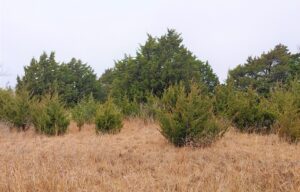The late Spring has brought the Sooner State warmer wetter weather, and since snakes are cold-blooded creatures, they have come out of hibernation and are appearing in backyards, campsites and fishing areas.

According to The Oklahoma Center for Poison and Drug Information (OCPDI), approximately 300 snake bites are reported annually in Oklahoma. The good news is, however, that out of the roughly 47 species of snakes indigenous to Oklahoma, only 7 are venomous.
Venomous snakes have long, hollow, retractable fangs that act as hyperemic needles to inject their toxin which can be fatal if proper medical attention is not received.
There are some ways to determine if a snake in Oklahoma is venomous:
- Typically the head is triangular or diamond-shaped.
- Venomous snakes have heat-sensing pits on each side of the head between the eyes and nostrils.
- If the pupils of the eyes are vertical (like a cat), the snake is most likely venomous.
According to Oklahoma State University Cooperative Extension wildlife specialist, Dwayne Elmore, “Snakes, both venomous and nonvenomous, cause great anxiety in many people and are considered cold-blooded killers. They are cold-blooded, of course, but unless you are a rodent, frog, insect or earthworm, you have little to fear.”
He says that most dangerous snakes are generally docile. “Many bites occur as a result of someone harassing the snake or putting their hands under objects without looking first.”
There are three types of venomous snakes in Oklahoma:
Cottonmouth, also called Water Moccasin -This snake is large and has a distinguishing black mark, running from the corner of its mouth to its eye. It is generally more than 31 inches in total length. Some have been reported to be 74 inches long, and weigh up to 10 lbs. The Cottonmouth/Water Moccasin can also be identified by its white flesh inside its mouth.
It is ubiquitous in the Eastern half of Oklahoma. The Cottonmouth is typically found in marsh-like habitats, especially in slow-moving, shallow streams and lakes.
Rattlesnakes comprise the bulk of venomous snakes in Oklahoma and can be readily identified by the rattlers on their tails, which they rapidly shake or “vibrate” when threatened. There are five species of rattlesnakes found in Oklahoma: Western Diamondback Rattlesnakes, Western Pygmy Rattlesnakes, Prairie Rattlesnakes, Western Massasauga Rattlesnakes, and Timber Rattlesnakes.
They can be found in forests, woodlands, prairie wetlands, swamps, bogs, and meadows as well as desert-like terrain and rocky habitats.
Copperhead- This venomous snake can be identified by light brown or reddish-brown or copper color with dark brown hourglass or dumbbell-shaped markings. Copperheads have a substantial girth and can reach lengths up to 3 feet.
They are primarily found in deciduous forests and mixed woodlands.
Because venomous snakes can cause serious illness, injury, or death it is best to avoid them and if in doubt, don’t try to get closer to determine if a snake is venomous, just assume all snakes you see are dangerous and steer clear.
Ways to avoid snakes
Look before you reach for anything in wooded areas.
If you are in an area where you know there are snakes, you should wear tear tall boots and long pants
You should always keep a sharp eye out for possible snakes, and be aware of where you step, particularly in tall grass, rocky terrain, and forest or wooded areas.
When fishing, boating, or swimming, be on the lookout for anything you notice swimming in the water.
Try to walk on paths that have no debris
You can reduce your chances of encountering a snake around your home by removing high grass, brush piles, and any junk piled up in your yard.
You should seal any cracks in foundations, windows, doors, and around air conditioners to prevent the slithery creatures from entering your home.
Things to do if you are bitten by a snake:
The first thing to remember is to stay calm to keep the heart rate down, and keep the bite site below heart level. Do not try to catch the snake, and above all, NEVER attempt to suck out the venom.
The following is first aid protocol for snake bites provided by the CDC:
“Seek medical attention as soon as possible (dial 911 or call local Emergency Medical Services. Antivenom is the treatment for serious snake envenomation. The sooner antivenom can be started, the sooner irreversible damage from venom can be stopped.
Driving oneself to the hospital is not advised because people with snake bites can become dizzy or pass out.
Take a photograph of the snake from a safe distance if possible. Identifying the snake can help with the treatment of the snakebite.
Apply first aid while waiting for EMS staff to get you to the hospital.
Lay or sit down with the bite in a neutral position of comfort.
Remove rings and watches before swelling starts.
Wash the bite with soap and water.
Cover the bite with a clean, dry dressing.
Mark the leading edge of tenderness/swelling on the skin and write the time alongside it.”
Hopefully, this information will keep you safe while you enjoy the outdoors.










